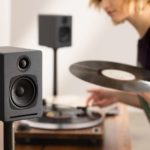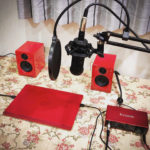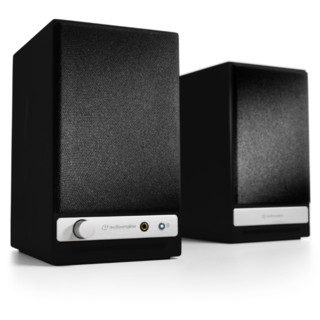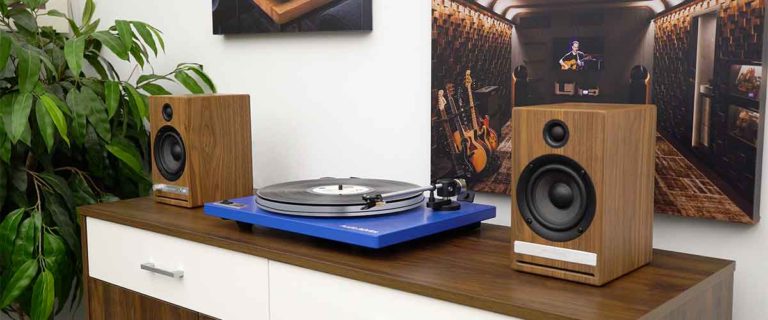Streaming music files used to be for listeners who cared more about quantity than quality. Times have changed. In the past ten years, various streaming services have begun offering files in resolutions of CD quality or above. At $189 USD, Audioengine’s B-Fi Multiroom Music Streamer offers a simple, inexpensive way to receive and distribute CD-resolution files. The B-Fi has dramatically changed the way I listen to music.
In the box
The B-Fi comes in a simple lift-top box, each of its contents occupying its own compartment molded into a single piece of Styrofoam: the B-Fi itself, a 42” stereo audio cable, a wall-wart power supply with detachable cord (USB Type-A to Micro), a microfiber storage bag, and a quick-start guide.
The B-Fi weighs only five ounces and is about the size of a pack of cigarettes: 3.5”W x 1”H x 3”D, or 3.75”H with its antenna pointing straight up. Its corner edges are gracefully rounded, and its aluminum case is white, with black plastic front and rear endcaps. The two bolts that hold the B-Fi together run all the way through the case, from front to back; the heads are plainly visible front and rear, giving it an industrial look. The pivoting antenna is permanently fastened to the front panel; other than that and the company and model names, the only thing on the front panel is an illuminated power button. On the rear panel are right and left analog outputs on two very-high-quality RCA jacks, a digital output (TosLink), and a jack for the 5VDC power supply. That’s it.
Built-in apps include those for iHeartRadio, Napster, Qobuz, QQ Music, Tidal, TuneIn, and Ximalaya -- units from the B-Fi’s second production run will also include Amazon Prime Music. That app and any future additions will be made available through a firmware update for earlier units. Apple AirPlay compatibility is included for accessing such third-party apps as Pandora and Amazon Music HD.
Via DLNA/UPnP, the B-Fi supports the file formats AAC, AAC+, ALAC, APE, FLAC, MP3, OGG, WAV, and WMA. The heart of the B-Fi is a 24-bit/192kHz ESS Technologies Sabre ES9023 DAC chip. Audioengine has limited the B-Fi’s use of this chip to 16/44.1.
The B-Fi doesn’t receive via Bluetooth -- it’s strictly a Wi-Fi streamer. Entirely wireless in operation, it lacks an Ethernet port for a wired connection to the Internet. It can be used with Audioengine’s free app, which is available from the Apple App Store or Google Play and requires an operating system of iOS 10.0 or later, or Android 5.0 or later.
Audioengine is a small independent company based in Austin, Texas. All of its support team are US-based, and they promptly answered my questions. They showed what a support team should be and seldom is.
Use
Setting up the B-Fi and getting it connected to the Internet was simpler and easier than with any other such device I’ve encountered. Download the Audioengine app, make sure an analog or digital interconnect is plugged into an input on your receiver, preamp, or powered speaker, follow the voice prompts to add the B-Fi to your Wi-Fi network, and you’re ready to start listening. From the app’s home menu you can choose Favorites, My Music, Search, or any one of the preinstalled streaming-service apps. The My Music option in the B-Fi app lets you access files stored locally on your phone, or from any DLNA/UPnP-enabled network attached storage (NAS) device.
Select one of the preinstalled apps and you’ll be taken to the home page of that streaming service. I tried Qobuz and Tidal for a while, but preferred Amazon Music HD and Primephonic, the latter a hi-rez service exclusively devoted to classical music. For these I had to open AirPlay; when I did, everything worked fine. The only problem I have with AirPlay is a delay of one or two seconds after you’ve commanded it to play a title but before that title starts playing. This is of no consequence once an album begins playing, as it doesn’t add any delay between tracks...
Read full article here.








